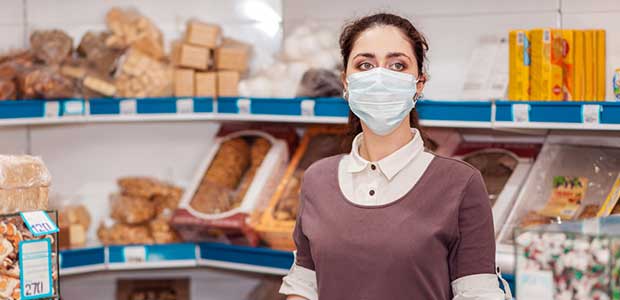
The Sickest Workers Might Be Returning to Work First
Healthcare is hard to come by in America without a salaried job, and many with hourly wages and preexisting health conditions are more worried about unemployment than coronavirus. Here’s why the sickest and most vulnerable might be coming to work first.
Ideally, every employer wants workers to come to work healthy and without a risk of infecting others. That is not always possible (with few paid sick days off a year) and especially during a pandemic when risk of COVID-19 transmission is high among workers. One recent New York Times piece explains why the sickest workers might be the first to return to work—which is probably the opposite of what is needed.
Many Americans are facing a difficult choice: go back to work and risk their health or lose their job and health insurance.
For many individuals with preexisting conditions, risk of infection from the coronavirus is especially high—which means that the idea of losing health insurance is almost unimaginable.
Patti Hanks, for example, is 62 and recently had ovarian cancer treatment. With her immunity low and at her age, she is worried about returning to the workplace, working with customers and sharing space and appliances with others.
If she did not return to work, she would lose her job and her health insurance.
“I just got over chemo,” she said. “Now is not the time for me to lose my insurance.”
So, like many other Americans, she returned to work—nervous, wary and with gloves and a mask. She makes sure customers keep their distance from her.
Hanks’ situation is not isolated. In fact, many Americans are in a difficult relationship with the idea of returning to work, losing their jobs, losing their health insurance or getting sick. For individuals getting paid minimum wage or hourly who do not have insurance, this risk of infection and no health coverage is extra daunting.
The article explains how healthcare could easily become just another liability in the country’s fight to contain the coronavirus. “It could push workers at highest risk of serious illness from coronavirus back to work the fastest,” said the article. “Those people need coverage to treat the pre-existing conditions that make them vulnerable in the first place.”
One Kaiser Family Foundation study found that about one-quarter of Americans, or 37.7 million people total, are estimated to be at high risk of serious illness from coronavirus. Some are at increased risk because of age, problems like diabetes or asthma or other CDC risk factors.
“It is one of the many ways the U.S. health care system has made us so much more vulnerable to the effects of the pandemic than other countries,” said Larry Levitt, executive vice president for health policy at the Kaiser Family Foundation and a co-author of the new study. “In other countries, you don’t hear about people losing health insurance when they lose their jobs.”
In the United States, 61 percent of working-age adults get health insurance through work. This is because of decisions from the federal government from the 1940s after World War I to encourage employers to provide health insurance for workers.
The Affordable Care Act provided other avenues for Americans to get health insurance. It expanded Medicaid to cover millions of low-income adults. It also created new private insurance marketplaces where middle-income Americans could buy subsidized coverage.
However, the healthcare landscape in the U.S. complicated—with many exceptions and clauses for individuals with certain salaries, preexisting or chronic conditions and employers’ healthcare options.
While this article does not explore healthcare coverage in depth, it does explain that many Americans at high risk of coronavirus infection, like Hanks, are going back to work and accepting the risks. They are more concerned about unemployment than they are the virus.
Hanks, though, said she chose to work and get coverage than not have either. It is how it is, she explained—but she is not alone in the struggle to balance the risks, the job and the health coverage.